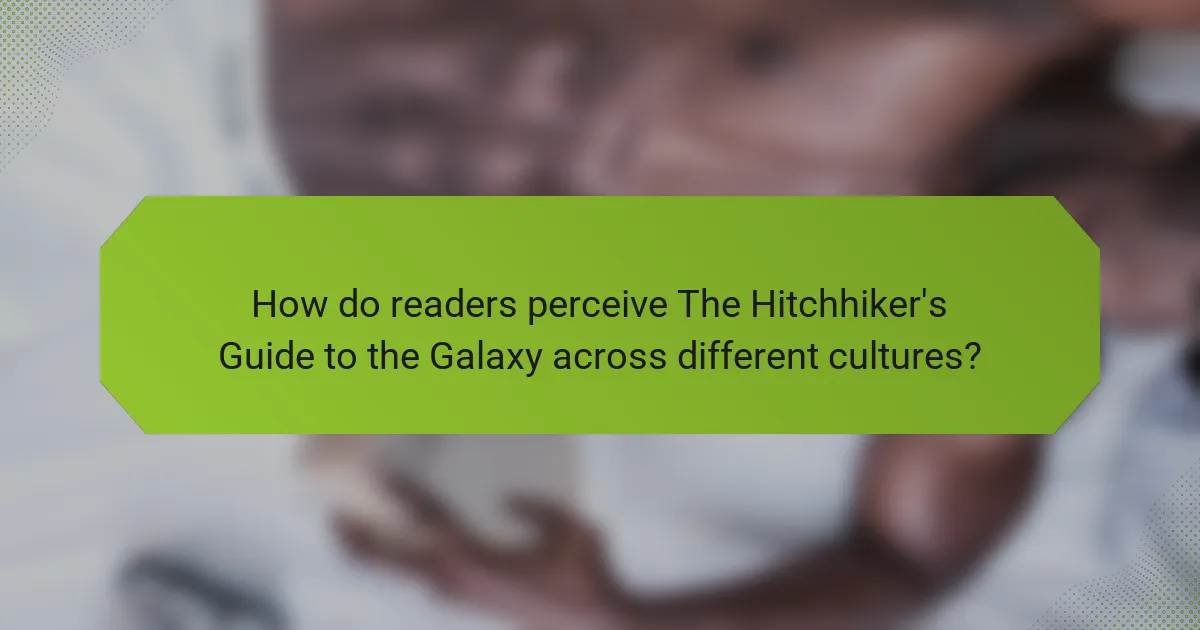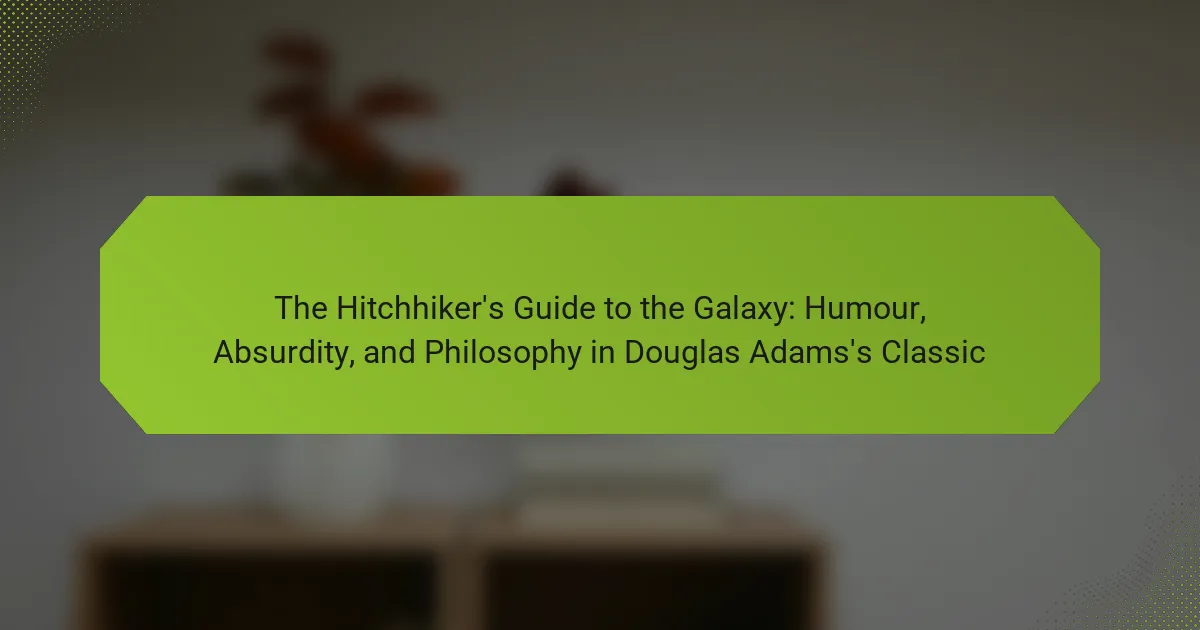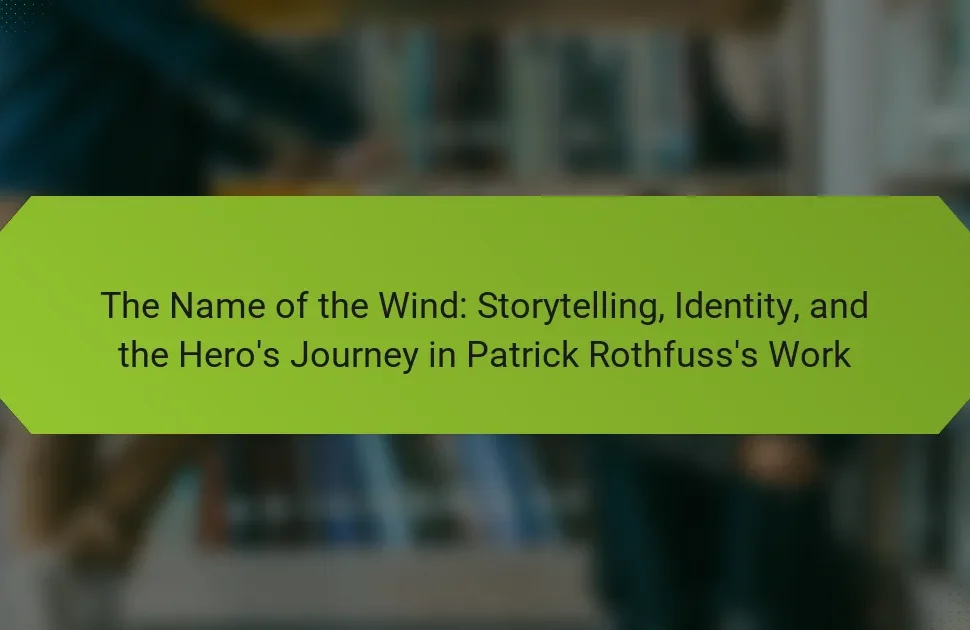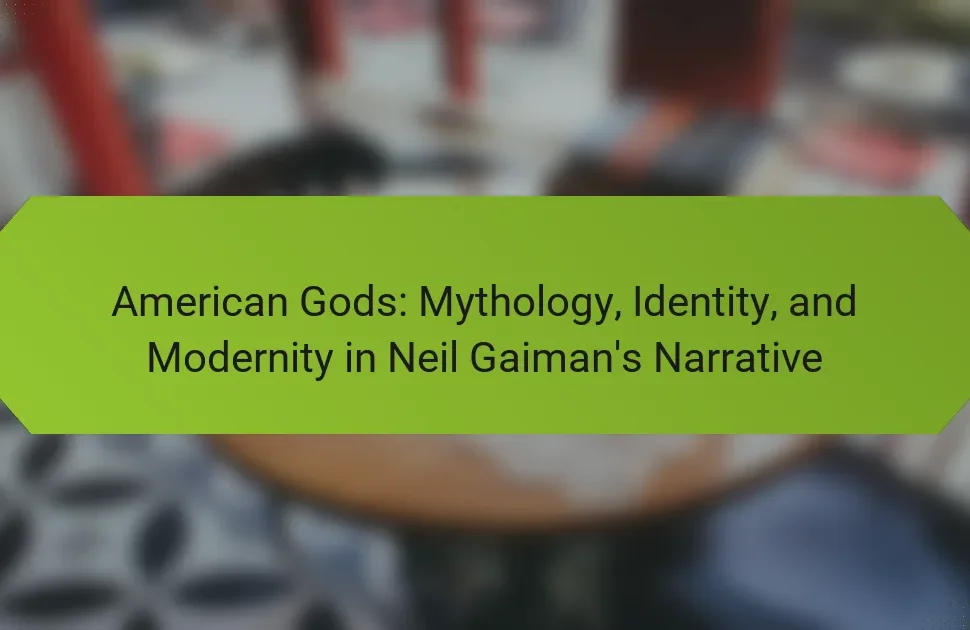“The Hitchhiker’s Guide to the Galaxy” offers a unique exploration of humor, absurdity, and philosophical insights. It employs satire to critique society and technology, while characters navigate existential questions. The narrative’s distinctive style blends comedic elements with profound themes, influencing popular culture and sparking discussions on the human condition. This article delves into the book’s thematic richness and its lasting impact on literature and beyond.

What themes of humor are prevalent in The Hitchhiker’s Guide to the Galaxy?
The Hitchhiker’s Guide to the Galaxy employs themes of absurdity, satire, and existential humor. Absurdity manifests in bizarre situations and characters, highlighting the randomness of the universe. Satire critiques society, technology, and bureaucracy, exposing human follies. Existential humor reflects on life’s meaninglessness, prompting readers to question their values and beliefs. These themes intertwine, creating a rich tapestry of comedic elements that resonate with readers.
How does Douglas Adams use absurdity to enhance storytelling?
Douglas Adams uses absurdity to enhance storytelling by creating unexpected scenarios that challenge logic. This technique engages readers, prompting them to reflect on deeper philosophical themes. For example, the character Ford Prefect’s nonchalant attitude towards the destruction of Earth illustrates the absurdity of existence. Adams’ blend of humor and surreal situations encourages readers to question societal norms and human behavior. This unique approach makes complex ideas accessible and entertaining, reinforcing the narrative’s impact.
What role does satire play in the narrative?
Satire plays a crucial role in “The Hitchhiker’s Guide to the Galaxy” by highlighting absurdities in human behavior and societal norms. Through humor and irony, Douglas Adams critiques bureaucracy, technology, and existentialism. This approach invites readers to reflect on philosophical themes while engaging with the narrative. The unique attribute of satire in this work lies in its ability to blend comedy with profound insights, making complex ideas accessible and entertaining. As a result, readers experience both laughter and contemplation, enhancing the overall impact of the story.

How does The Hitchhiker’s Guide to the Galaxy explore philosophical concepts?
The Hitchhiker’s Guide to the Galaxy explores philosophical concepts through humor and absurdity. Douglas Adams uses satire to address existential questions, such as the meaning of life and the nature of reality. The narrative frequently highlights the randomness of the universe, challenging traditional philosophical notions. Characters like Arthur Dent embody the struggle to find purpose in an indifferent cosmos, illustrating the absurdity of human existence. Through its playful tone, the work encourages readers to reflect on serious themes while embracing the chaos of life.
Which philosophical questions are raised through the characters’ journeys?
The characters’ journeys in “The Hitchhiker’s Guide to the Galaxy” raise philosophical questions about existence, purpose, and the nature of reality. Through absurd humor, the narrative explores the meaning of life, the randomness of the universe, and the search for knowledge. Characters like Arthur Dent confront existential dilemmas, while Ford Prefect embodies the absurdity of life through his nonchalant attitude towards the universe’s chaos. This interplay invites readers to reflect on their own beliefs and the significance of their experiences.
How does the book reflect existentialism and absurdism?
The book reflects existentialism and absurdism through its humor and exploration of life’s meaning. Douglas Adams presents a universe filled with randomness and chaos, emphasizing the absurdity of existence. Characters often face existential dilemmas, highlighting the search for purpose in an indifferent cosmos. The narrative’s comedic elements serve as a vehicle for philosophical inquiry, making profound concepts accessible and entertaining.

What are the distinctive narrative techniques employed by Douglas Adams?
Douglas Adams employs distinctive narrative techniques in “The Hitchhiker’s Guide to the Galaxy” that blend humor, absurdity, and philosophical insights. His use of dry wit creates a comedic tone while exploring complex themes. The absurdity of situations and characters highlights the randomness of life, reinforcing the philosophical underpinnings of existentialism. Additionally, Adams’s unique narrative style features non-linear storytelling, allowing for unexpected twists that engage readers. The interplay between science fiction elements and satirical commentary on society further distinguishes his writing, creating a rich tapestry of humor and thought-provoking ideas.
How does the use of dialogue contribute to the humor?
Dialogue in “The Hitchhiker’s Guide to the Galaxy” creates humor through wit, absurdity, and character interactions. The rapid exchanges and unexpected responses highlight the absurdity of situations, enhancing comedic effect. For instance, Arthur Dent’s bewilderment contrasts with the nonsensical world around him, generating humor from his reactions. Additionally, the interplay between characters, such as Ford Prefect’s nonchalance and Zaphod Beeblebrox’s eccentricity, amplifies the absurdity, making dialogue a crucial tool for comedic storytelling.
What impact do footnotes have on the reading experience?
Footnotes enhance the reading experience by providing additional context and humor. In “The Hitchhiker’s Guide to the Galaxy,” Douglas Adams uses footnotes to deliver absurd commentary, enriching the narrative. This technique allows readers to explore philosophical insights without interrupting the flow of the story. Footnotes serve as a unique attribute, blending humor and depth, which is a hallmark of Adams’s writing style. They create a layered reading experience that encourages engagement and reflection.

Which characters embody the core themes of the book?
The characters in “The Hitchhiker’s Guide to the Galaxy” embody humor, absurdity, and philosophical themes. Arthur Dent represents the everyman facing absurdity, while Ford Prefect symbolizes the chaotic nature of the universe. Zaphod Beeblebrox illustrates the absurdity of authority with his reckless behavior. Marvin the Paranoid Android embodies existential despair, contrasting humor with deep philosophical insights. Lastly, Slartibartfast showcases the absurdity of creation through his role in planet design, highlighting the whimsical nature of the narrative.
How does Arthur Dent represent the everyman in absurd situations?
Arthur Dent embodies the everyman in absurd situations by showcasing relatable confusion and vulnerability. His reactions to bizarre events highlight human resilience amidst chaos. As a character, he navigates a universe filled with illogical occurrences, making him a mirror for readers who face their own absurdities. This relatability emphasizes the philosophical undertones in Douglas Adams’s work, where existential questions arise in the most ludicrous contexts. Arthur’s journey reflects the struggle to find meaning in a chaotic world, reinforcing the theme of absurdity as a fundamental aspect of the human experience.
What makes Zaphod Beeblebrox a unique character in the story?
Zaphod Beeblebrox is a unique character due to his outrageous personality and dual-headedness. His flamboyant nature and disregard for authority create humor and absurdity throughout the narrative. Zaphod embodies the theme of self-absorption, often prioritizing his desires over the welfare of others. His role as a former president of the galaxy adds a layer of irony, showcasing the absurdity of political systems. Additionally, his unique attribute of being a two-headed, three-armed being emphasizes the novel’s exploration of identity and existence.

How has The Hitchhiker’s Guide to the Galaxy influenced popular culture?
The Hitchhiker’s Guide to the Galaxy has profoundly influenced popular culture through its unique blend of humor, absurdity, and philosophical insights. Its satirical take on life, technology, and the universe resonates across various media, inspiring countless works in literature, film, and television.
Notably, the concept of the “42” as the answer to life’s ultimate question has permeated popular discourse, symbolizing the search for meaning. The book’s inventive narrative structure and character archetypes have shaped comedic storytelling, paving the way for future science fiction and fantasy genres.
Additionally, the series has sparked discussions around existentialism and the human condition, encouraging audiences to reflect on their place in the universe. This philosophical layer, combined with its wit, has made it a cultural touchstone, influencing creators and thinkers alike.
Overall, The Hitchhiker’s Guide to the Galaxy remains a pivotal work, exemplifying how humor and absurdity can effectively convey profound truths about existence.
Which references to the book can be found in modern media?
References to “The Hitchhiker’s Guide to the Galaxy” appear frequently in modern media, showcasing its lasting influence. Notable examples include television shows, films, and literature that incorporate its humor and absurdity.
1. The TV series “The Big Bang Theory” features characters who reference the book, emphasizing its cultural impact.
2. The film “Guardians of the Galaxy” includes nods to the book’s themes of space exploration and quirky humor.
3. The animated series “Rick and Morty” often echoes the absurdist elements found in Adams’s work.
4. Various podcasts and YouTube channels discuss the book, highlighting its philosophical insights and humor.
5. Merchandise, such as T-shirts and mugs, often feature quotes or concepts from the book, indicating its popularity.
6. Video games, like “No Man’s Sky,” draw inspiration from its exploration themes and comedic tone.
How has the book inspired adaptations in film and radio?
The book has inspired numerous adaptations in film and radio by translating its humor and absurdity into visual and auditory experiences. The 1981 BBC radio series was the first adaptation, capturing the essence of Douglas Adams’s wit. In 2005, a feature film brought the story to a broader audience, blending comedy with science fiction. The adaptations maintain the book’s philosophical themes while exploring new creative interpretations. Each version highlights unique attributes, such as the film’s visual effects and the radio’s sound design, enriching the original narrative.

What are the key cultural references within The Hitchhiker’s Guide to the Galaxy?
The Hitchhiker’s Guide to the Galaxy contains key cultural references that highlight humor, absurdity, and philosophical insights. Notable references include the concept of the “Answer to the Ultimate Question of Life, the Universe, and Everything,” which humorously suggests that the answer is simply “42.” This absurdity reflects a deeper commentary on the search for meaning. The book also parodies bureaucracy and technology, evident in the character Marvin the Paranoid Android, who embodies existential despair. Furthermore, references to real-world elements, such as British culture and science fiction tropes, enrich the narrative and enhance its satirical edge.
How does British humor shape the narrative?
British humor significantly shapes the narrative of “The Hitchhiker’s Guide to the Galaxy” through its unique blend of absurdity and wit. This humor reflects the cultural context of British society, characterized by irony, satire, and a penchant for the nonsensical. Douglas Adams employs these elements to critique philosophical concepts and societal norms, making complex ideas accessible and entertaining. The absurd situations faced by characters, such as the bureaucratic absurdity of intergalactic travel, highlight the unpredictability of life. This narrative style encourages readers to question reality and embrace the chaos inherent in existence.
What significance do intergalactic travel and technology hold in the story?
Intergalactic travel and technology are central to the humor and philosophical themes in “The Hitchhiker’s Guide to the Galaxy.” They highlight absurdity and the trivial nature of human concerns in the vast universe. The advanced technology, such as the Infinite Improbability Drive, serves as a vehicle for exploring existential questions while emphasizing the randomness of life. This interplay between technology and humor illustrates the unpredictability of existence, making profound statements about society and human behavior.

How do readers perceive The Hitchhiker’s Guide to the Galaxy across different cultures?
Readers perceive The Hitchhiker’s Guide to the Galaxy as a unique blend of humor, absurdity, and philosophical insight, with cultural interpretations varying widely. In Western cultures, the satire of bureaucracy resonates deeply, while in Eastern cultures, the emphasis on existential themes garners attention. The book’s absurdist humor often serves as a universal connector, fostering appreciation across diverse backgrounds. Additionally, the unique attribute of its narrative style—combining science fiction with comedic elements—allows readers to engage with complex ideas playfully. As a result, the novel’s impact transcends cultural boundaries, making it a beloved classic worldwide.
What insights do international audiences provide regarding its humor?
International audiences perceive humor in “The Hitchhiker’s Guide to the Galaxy” as a blend of absurdity and philosophical insight. This unique combination resonates globally, appealing to diverse cultural backgrounds. For instance, the absurdity of everyday situations and the satirical take on bureaucracy transcend cultural barriers, making the humor relatable. Moreover, the philosophical undertones invite deeper reflection, prompting discussions on existence and meaning across various societies. Such insights reveal how humor can unify perspectives while celebrating differences.
How does the book resonate with diverse philosophical backgrounds?
The book resonates with diverse philosophical backgrounds by blending humor and absurdity with existential themes. Readers from various philosophical traditions find connections to concepts like absurdism, skepticism, and humanism. For example, absurdism is exemplified through the protagonist’s encounters with the illogical universe. Additionally, the satire of bureaucracy appeals to those influenced by critical philosophy. The book’s playful tone makes complex ideas accessible, fostering engagement across different viewpoints. This unique ability to intertwine humor with profound philosophical questions enhances its universal appeal.
What best practices can enhance the reading experience of The Hitchhiker’s Guide to the Galaxy?
To enhance the reading experience of The Hitchhiker’s Guide to the Galaxy, focus on its humor, absurdity, and philosophical depth. Engaging with the text through active reading and reflection allows for a deeper appreciation of Douglas Adams’s wit.
Consider reading aloud to capture the rhythm and timing of the jokes. Annotating passages can help identify key themes and recurring motifs. Additionally, discussing the book with others can offer new perspectives and insights, enriching the overall experience.
Exploring supplementary materials, such as interviews with Adams or analyses of the book’s impact, can further deepen understanding. Embracing the absurdity of the narrative encourages readers to let go of conventional expectations and fully immerse themselves in the experience.




